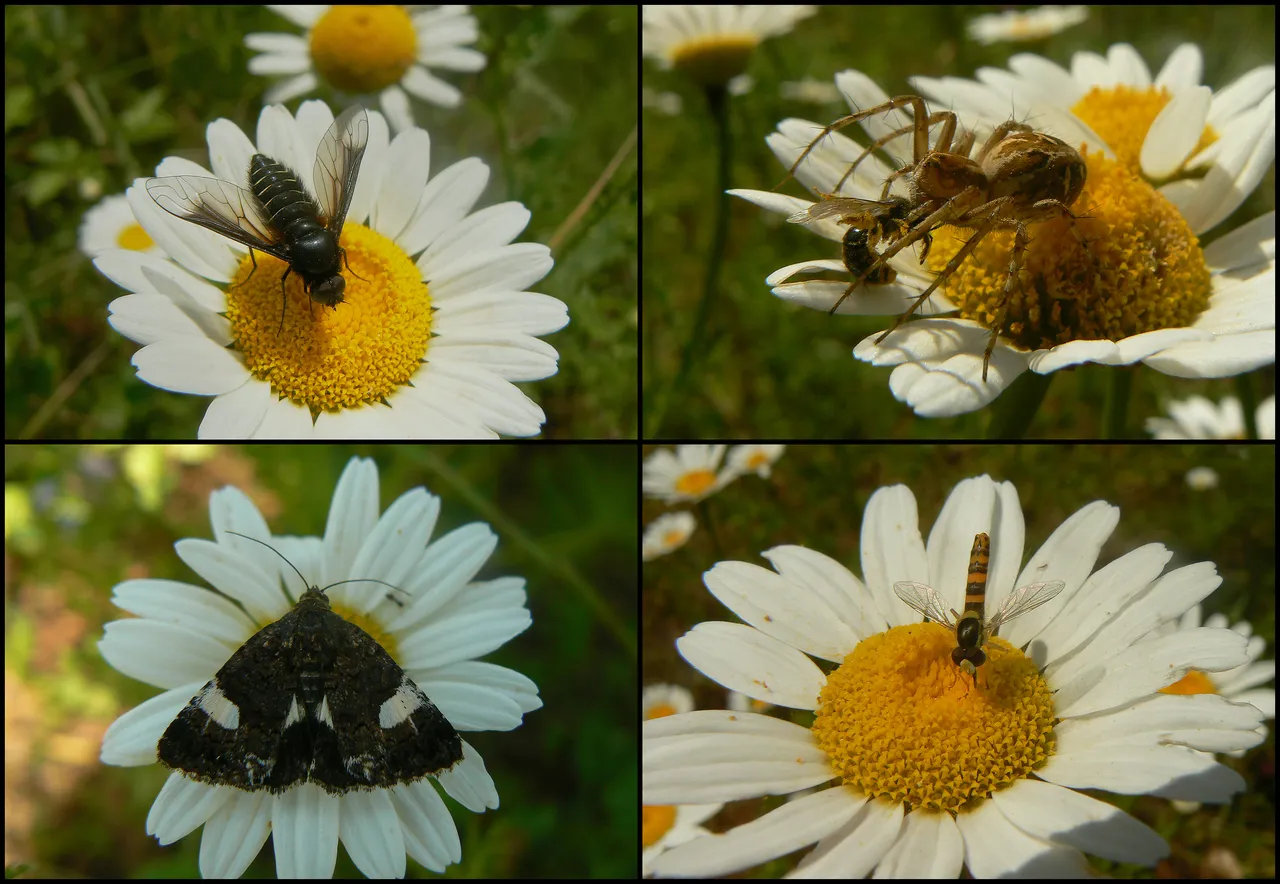While rambling around the meadows in between my hometown and the nearest city on the hot afternoon of July the sixth 2019 ...
... I came across a field covered with many flowers that look like big daisies, more than double in size compared with the usual daisies that grow on my lawn.

And among them ...
... I found quite a few interesting insects. In this triptych, you can see a big, robust fly from the Bombyliidae family - the Lomatia belzebul.
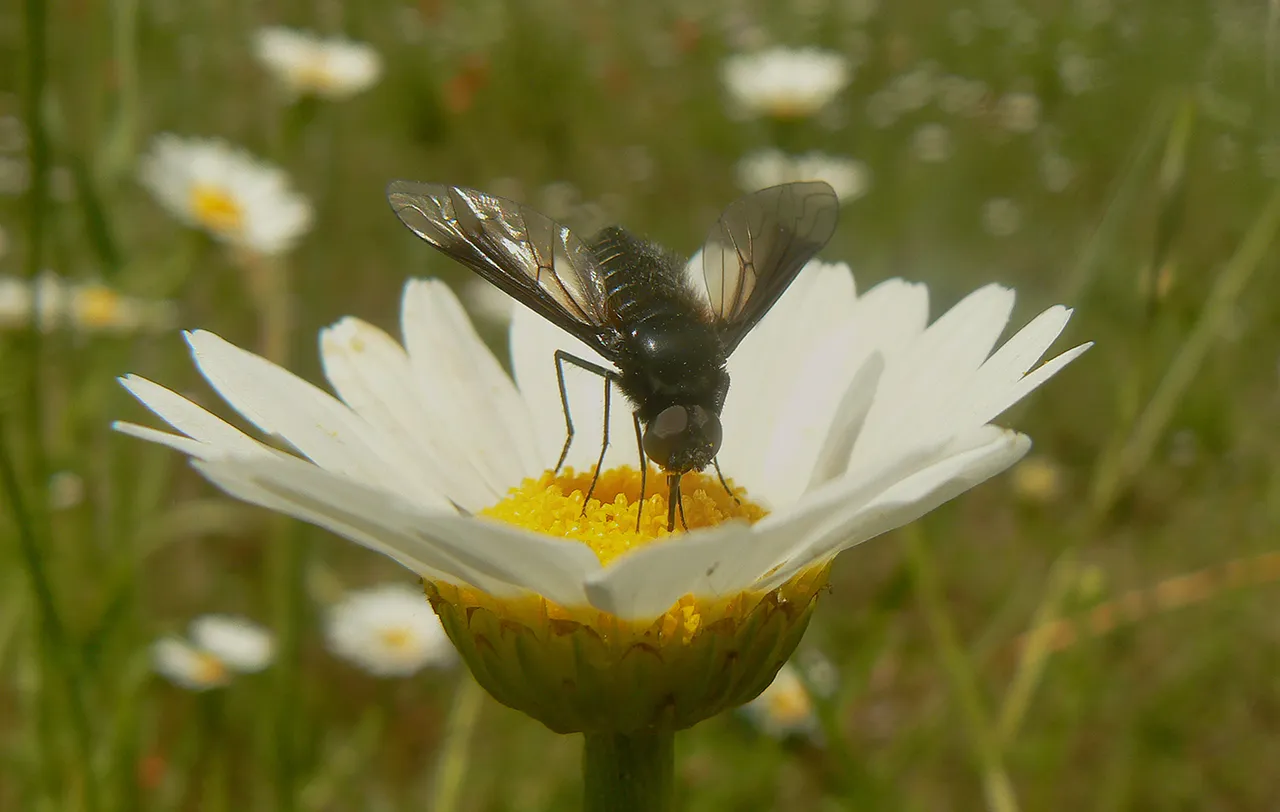
The fly was very fast and evasive when I arrived. It was a couple of years ago, but I remember that day well when I see these photographs. I was trying to get a shot, but the insect will land only for a second or two and escape when I came closer with the camera. It took me at least half an hour of waiting quietly among the flowers for this fly to become accustomed to my presence.
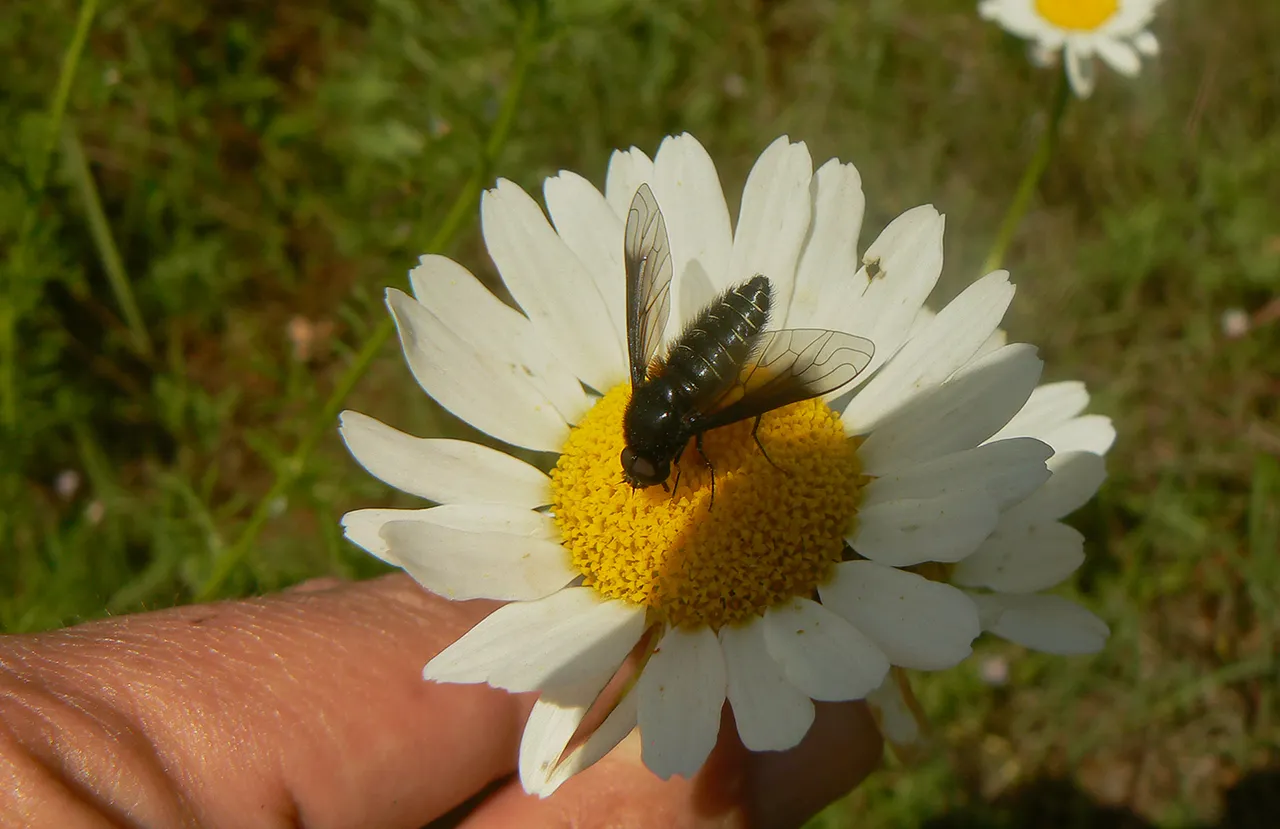
In the end, I was able to hold the flower with one hand and shoot with the other.
These small bees, don't know the species, were also buzzing around ...
... while the Linx spiders Oxyopes heterophthalmus were waiting in ambush.
Here you can see the spider with its prey ...

... one of those small bees.
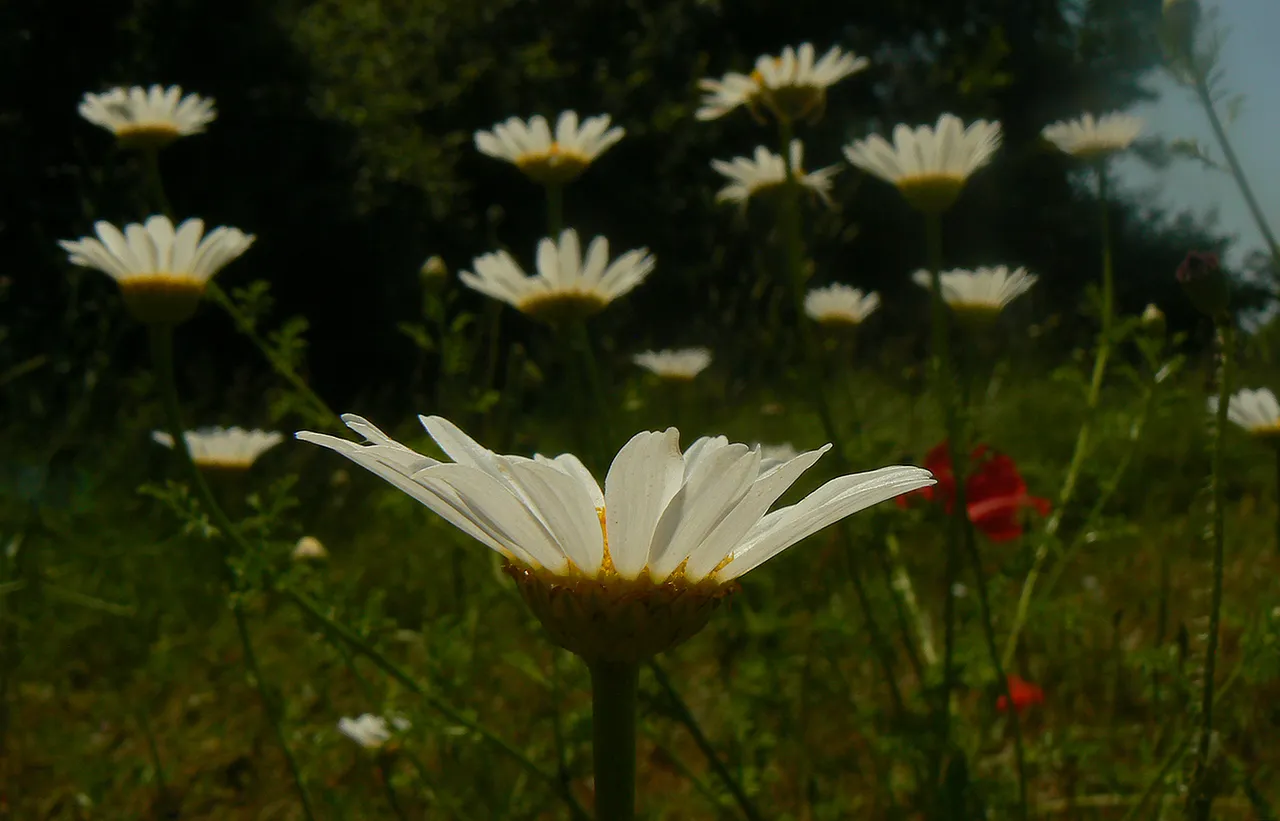
While talking about insects, I almost forgot to introduce the main protagonists - the flowers.
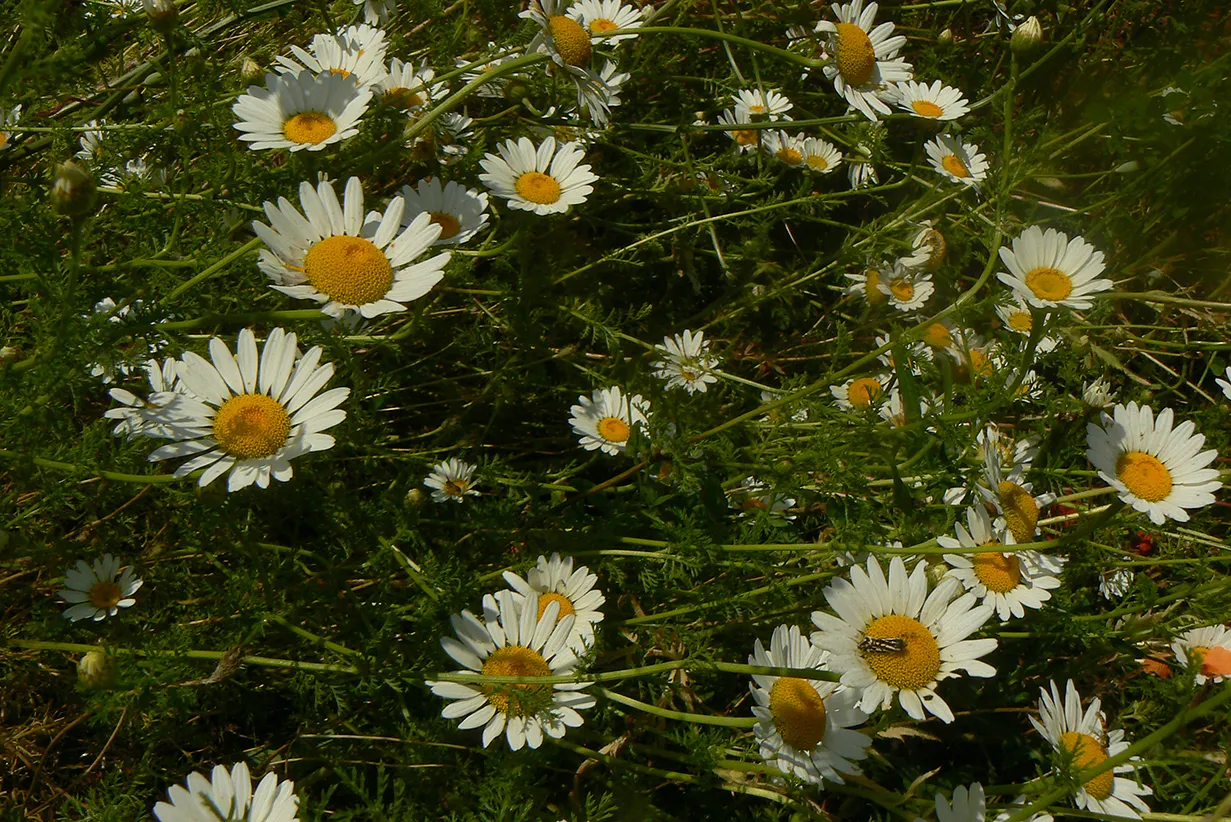
These are the flowers of the Leucanthemum vulgare plant.
Here you can see the Tyta luctuosa, a moth from the Noctuidae family that was sucking the nectar through its proboscis.
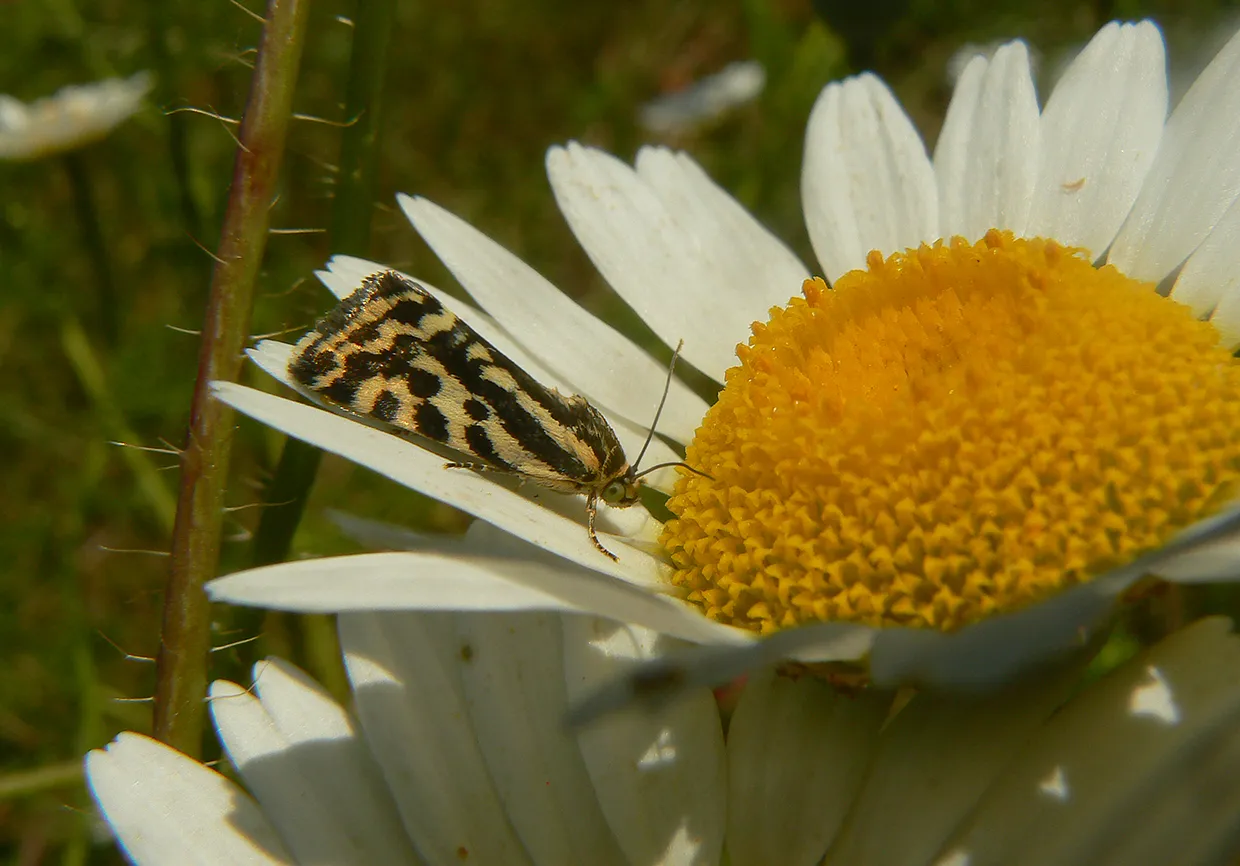
This is another moth ...
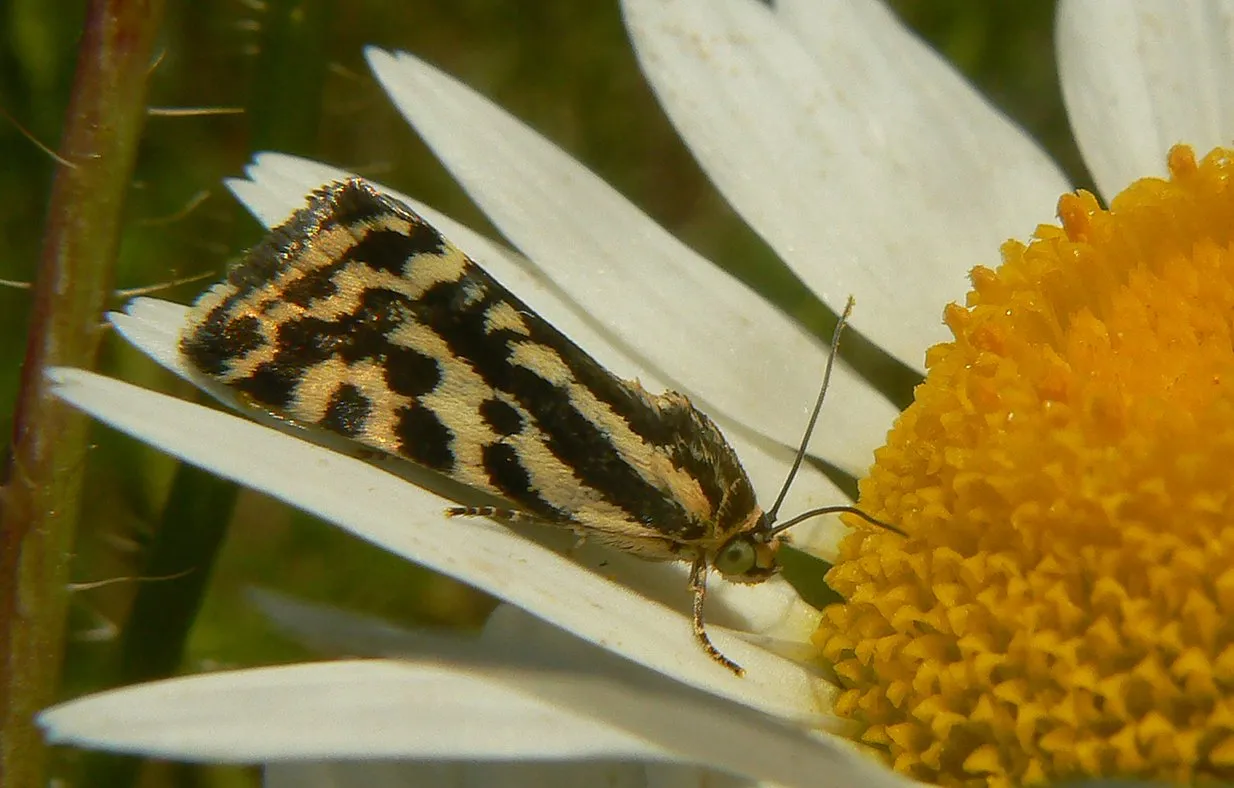
... the Emmelia trabealis. From the same family. Noctuidae.
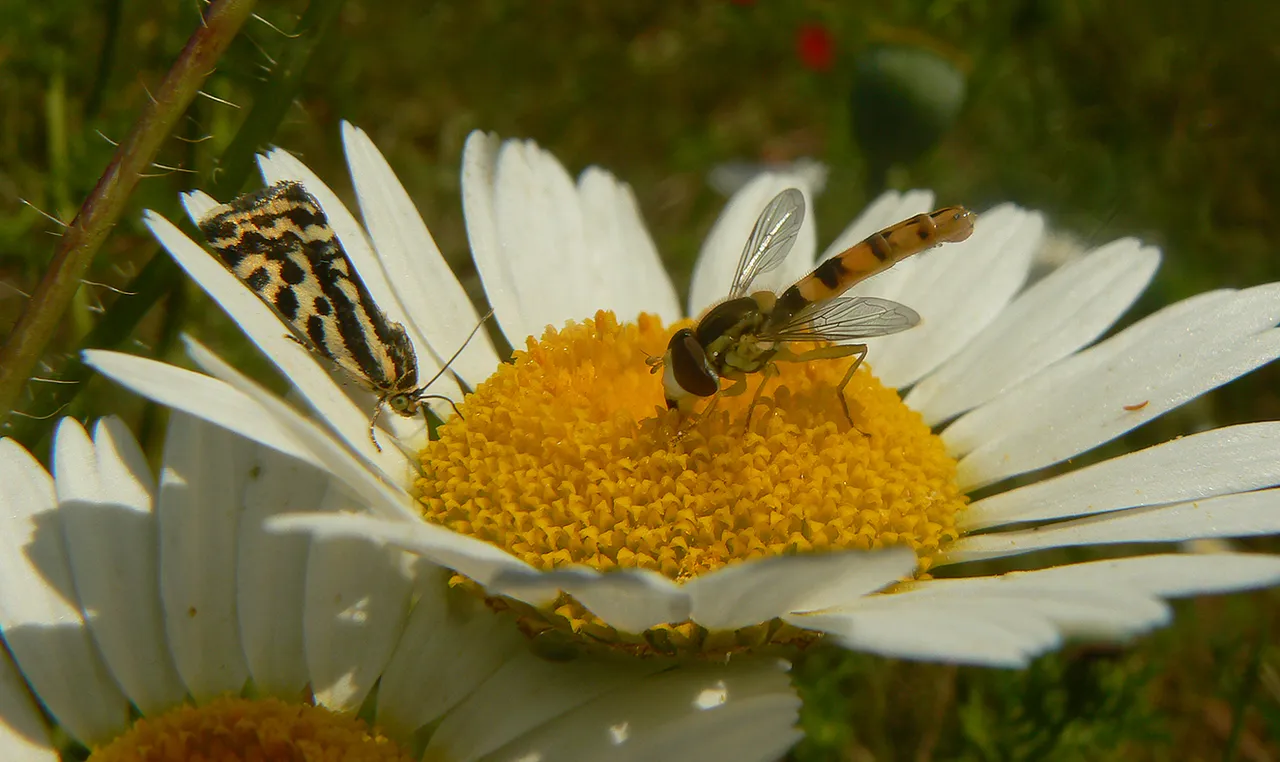
At one point, a fly landed on the same flower and started feeding.
This is the Sphaerophoria scripta, a species from the Syrphidae family.
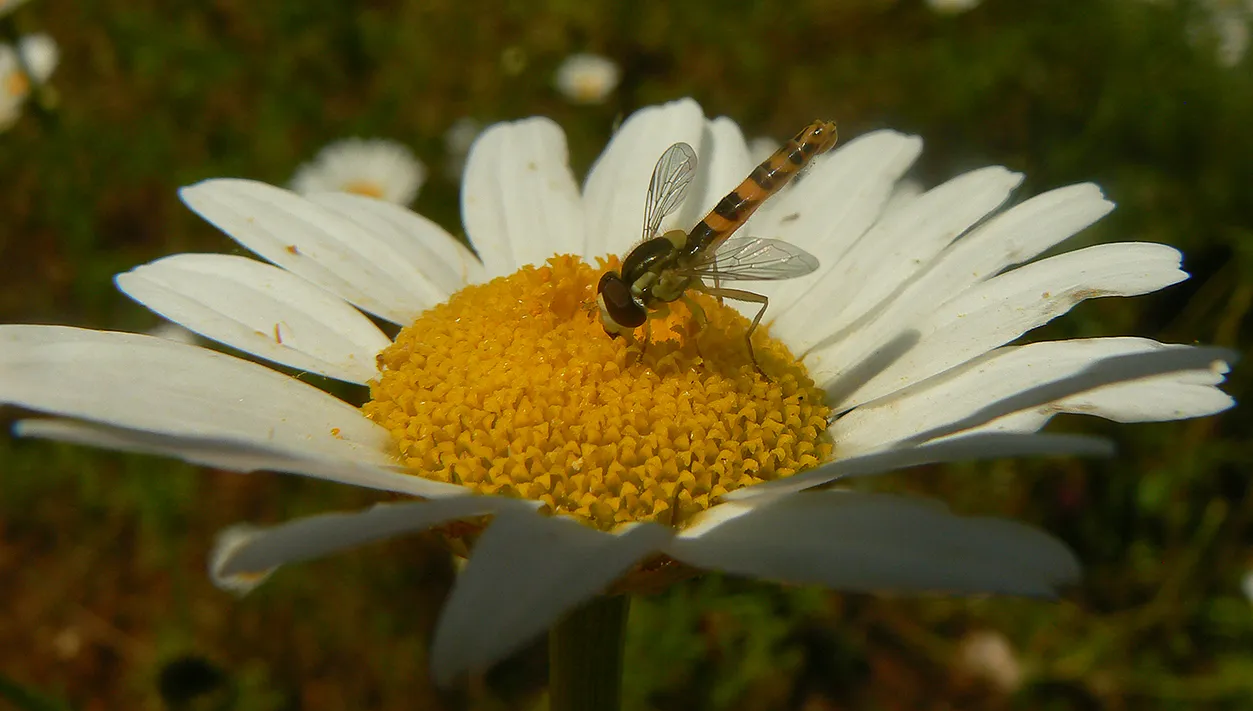
Soon the fly flew away. But not far. In this photograph, you can see the same Sphaerophoria scripta feeding on the yellow center of the nearby flower.
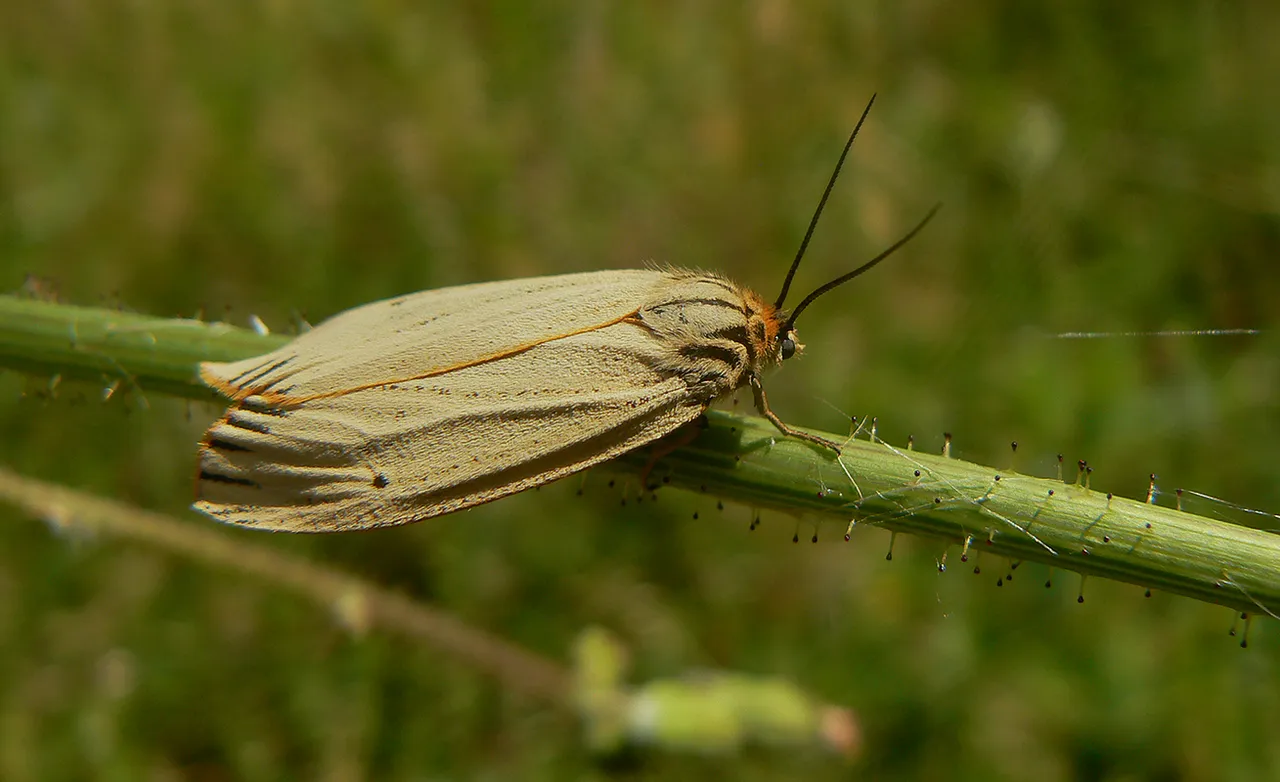
This moth from the Erebidae family, the Coscinia striata ...

... was resting on the long stem of the Common Poppy (Papaver rhoeas)
Some Leucanthemum vulgare flowers were hosting the aphids guarded by the ants. You can barely see these very small insects in the three shots above because I didn't have the macro lens back then in 2019. All the photographs in the post were taken with a small, not very good compact camera.
The Tropinota squalida beetle has buried its head in the juicy center of the flower. These beetles feed mainly on pollen and nectar, but occasionally can also chew other soft parts and damage the flower.
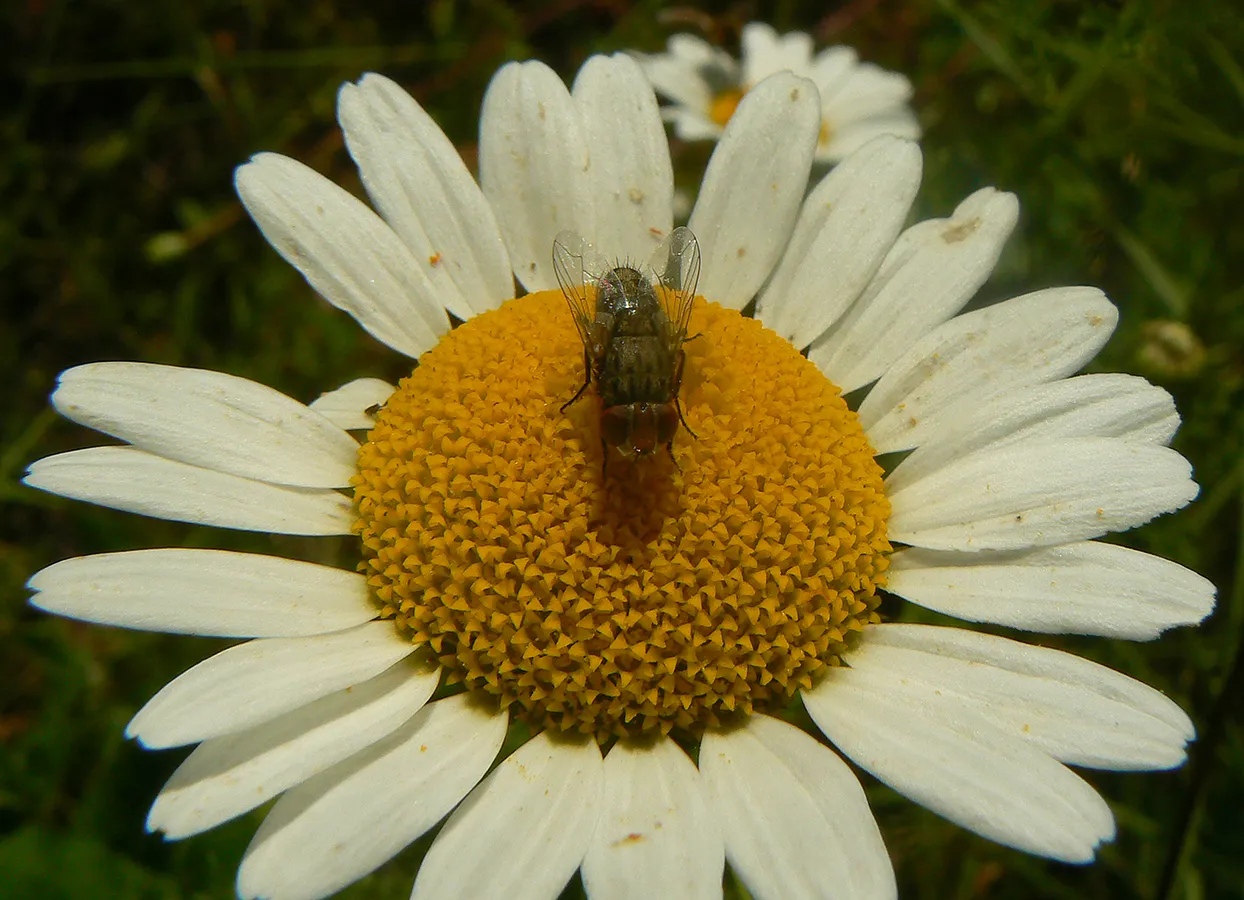
Here you can see a small fly that I wasn't able to identify.

I don't know the family and have no idea what species this could be.
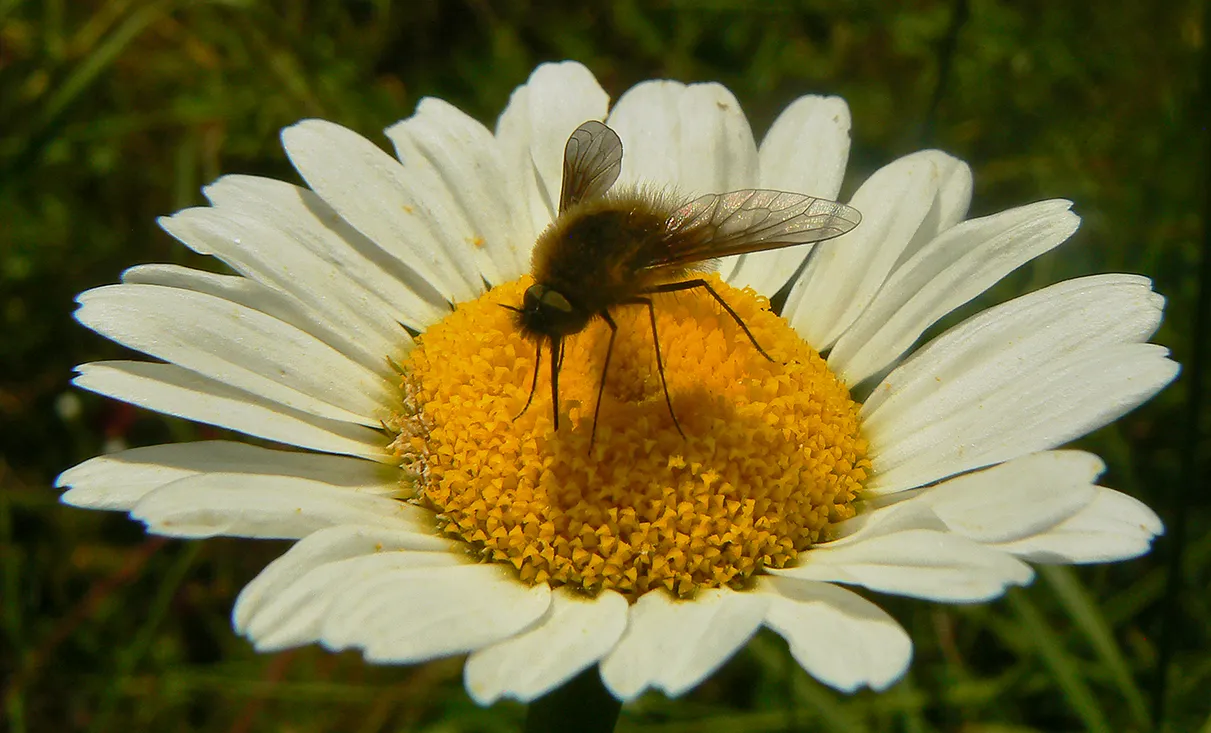
In this photograph, you can see a fly from the Bombyliidae family. Can't tell you the exact species.
A bit later, I encountered another Lomatia belzebul.
And that's it. These flowers sustain a nice variety of small arthropods. In this post, you saw only a few of them.
AS ALWAYS HERE ON HIVE, THE PHOTOGRAPHS ARE MY WORK.

